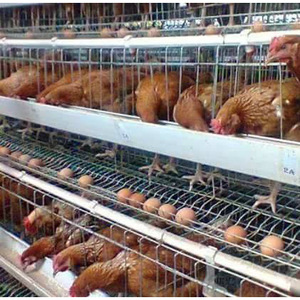Points to note when using layer cages to configure feed
- font size
- Be the first to comment!
In the process of using layer rearing equipment, the flocks need more nutrients, and the daily feed of the flocks needs to be configured according to the nutrients required by the flocks. Allow the chickens to balance their nutrition and let the laying hens perform well. But to configure the diet, we must pay attention to reasonable science. The author below gives the farmer an introduction to the points required to configure the feed in the layer cage.
1. The salt content should not be too high: salt is a raw material that must be added in the process of formulating the feed. It can enhance appetite and prevent the occurrence of cockroaches and anus. However, if the farmer adds too much salt to the chicken feed, it will lead to thirst. Then there will be a lot of water, which will cause the hens to drink too much water and often have strong diarrhea. In addition, the farmer must control the amount when adding salt to avoid excessive salt content in the feed, causing diarrhea in the laying hen.

2. The amount of stone powder added should not be too high: stone powder is also a kind of raw material that farmers often add when formulating feed. However, farmers should pay attention to the fact that if the amount of stone powder added in the diet is too much or too fast, it will lead to high blood calcium in the laying hens, increased kidney burden, causing kidney swelling and eventually diarrhea. When formulating the feed, the author reminded the farmers that the amount of stone powder to be added should gradually increase with the increase in the egg production rate of the laying hen, and it is not possible to add too much at one time.
3. The crude protein level should not be too high: protein is a nutrient raw material for laying hens. Generally, the content of crude protein in the feed of laying hens is about 16%, so the farmers should strictly control the content, the protein content in the feed is too high or the egg energy ratio is unbalanced, which may cause the liver and kidney function of the laying hen to weaken. It causes a large amount of urate deposition and even gout.
4. Prevent moldy changes of raw materials: high temperature and high humidity weather, it is easy to cause mildew in feed, and moldy feed farmers should not feed them. Because the moldy feed contains some toxins, these toxins will stimulate and destroy the intestinal mucosa in the laying hens, which will lead to increased permeability of the intestinal mucosa in the laying hens, causing diarrhea in the laying hens.
The above is the author's description of the farmers, in the process of using chicken in the layer battery cages to raise the chicken, the farmers to prepare the four precautions of the feed, I hope the above description can bring some help to the farmers.


